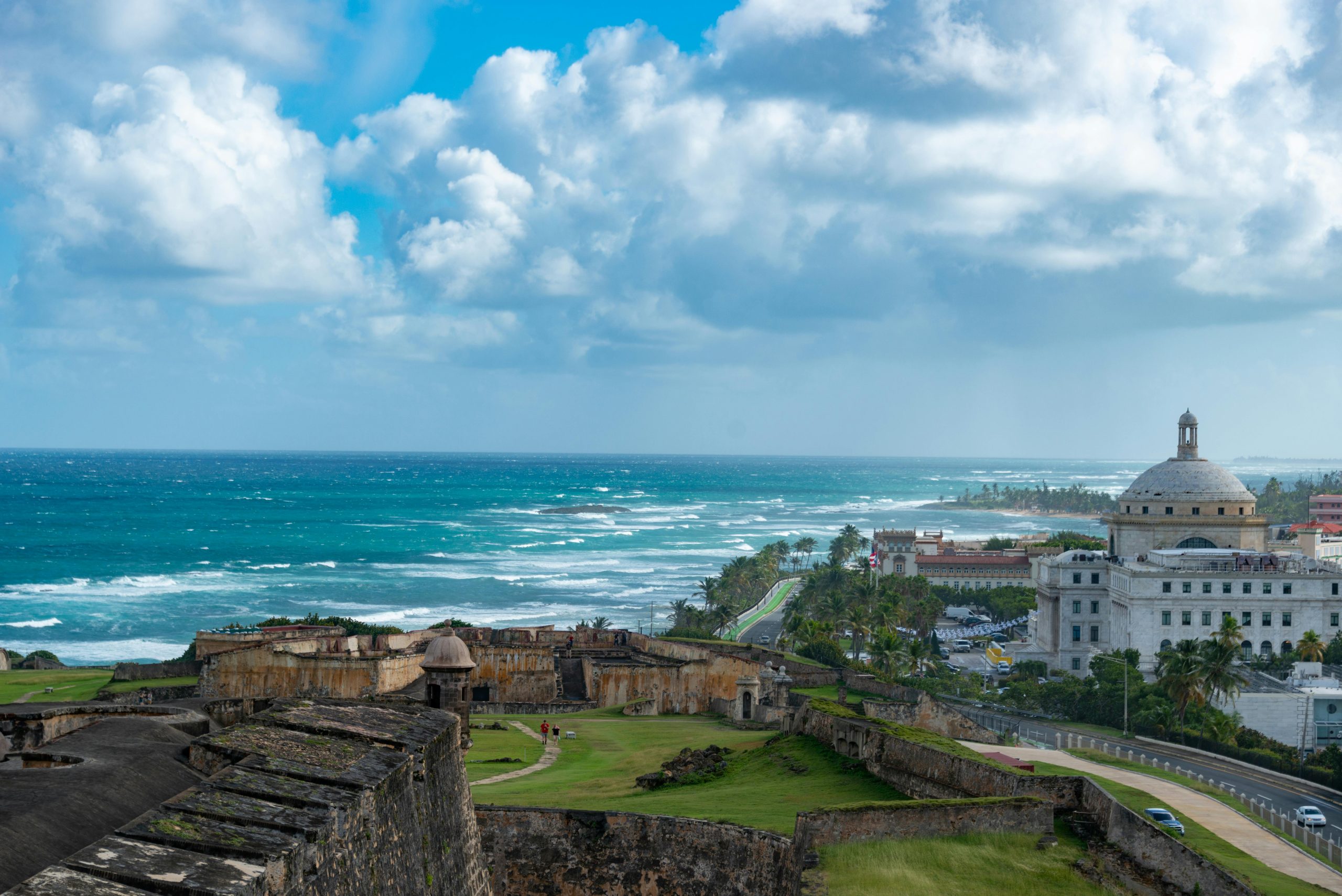Do You Need a Passport to Fly to Puerto Rico? Essential Travel Information

Traveling to Puerto Rico can be an exciting adventure, but many travelers wonder about the passport requirements. U.S. citizens do not need a passport to fly to Puerto Rico, as it is a U.S. territory. This makes planning a trip to this tropical paradise simpler for American travelers
Permanent residents who hold a green card do not require a passport when traveling to Puerto Rico. For those flying from the mainland United States, valid identification is usually sufficient. However, there are some considerations for non-U.S. citizens and those with specific travel circumstances. Understanding these requirements can help ensure a smooth journey and enjoyable stay in Puerto Rico.
Key Takeaways
- U.S. citizens can travel to Puerto Rico without a passport.
- Valid ID is typically needed for flights from the mainland.
- Non-U.S. citizens may have different entry requirements.
Overview of U.S. Territories
U.S. territories are regions governed by the United States but not part of any state. These areas have different rights and responsibilities than states.
Some key U.S. territories include:
- Puerto Rico
- Guam
- U.S. Virgin Islands
- Northern Mariana Islands
- American Samoa
Citizens of the U.S. can travel to these territories without a passport. This makes travel convenient for Americans.
Each territory has its own unique culture, geography, and legal systems. For example, Puerto Rico is known for its vibrant culture and beautiful beaches. Guam, located in the Pacific, has a rich history influenced by various cultures.
While U.S. citizens enjoy easier access to these territories, non-citizens must present a valid passport. This distinction ensures that the territories maintain their security while welcoming visitors.
Tourism plays an important role in the economy of many U.S. territories. Travelers can explore diverse landscapes, unique wildlife, and local traditions.
Understanding these territories helps in planning travel and appreciating the different experiences they offer.
Passport Requirements for U.S. Citizens
U.S. citizens do not need a passport to travel to Puerto Rico. Since Puerto Rico is a U.S. territory, travel is treated like domestic travel.
Read Also: Passport Bio Page.
Instead of a passport, travelers can use a valid government-issued photo ID. This can include a driver’s license or a state ID card.
Starting on May 7, 2025, additional requirements may apply. Citizens should check if their state complies with the Real ID Act. If not compliant, they might need a passport for air travel.
Here’s a quick summary of identification requirements:
| Travel Requirement | Need a Passport? |
|---|---|
| Travel from U.S. to Puerto Rico | No |
| Valid photo ID | Yes (e.g., driver’s license) |
| Real ID Act compliance | Check state laws |
American Samoa has different rules. Travelers to American Samoa will need either a passport or a certified U.S. birth certificate.
It is essential for travelers to verify their IDs before flying. Traveling without the correct ID can cause delays or prevent boarding.
Flying to Puerto Rico
Traveling to Puerto Rico is straightforward for U.S. citizens, as it does not require a passport. Knowing the specific travel documentation needed and understanding the dynamics of domestic flights will simplify the experience.
Air Travel Documentation
When flying to Puerto Rico, U.S. citizens only need a government-issued photo ID, such as a driver’s license or state ID. This applies because Puerto Rico is a U.S. territory, allowing travel without a passport.
Travelers should keep their ID accessible for check-in and security. Children under 18 usually do not need identification when traveling with an adult. However, airlines may have specific requirements, so checking with the airline beforehand can prevent issues.
Domestic Flights
Flights to Puerto Rico operate like any other domestic flight within the United States. Major airlines offer frequent flights from various U.S. cities to the main airport, Luis Muñoz Marín International Airport in San Juan.
Passengers should book their flights in advance, especially during peak tourist seasons. It is advisable to check baggage policies, as they can vary between airlines. Considering time zones is also important, as Puerto Rico operates on Atlantic Standard Time.
Non-U.S. Citizens and Permanent Residents
Traveling to Puerto Rico involves specific requirements for non-U.S. citizens and permanent residents. Understanding these regulations is important to ensure a smooth journey.
Visitors From Other Countries
Non-U.S. citizens must have a valid passport to enter Puerto Rico, as it is a U.S. territory. In addition to a passport, visitors may need a visa, depending on their country of origin.
The U.S. State Department provides guidelines on visa requirements. Travelers can check if they need a visa based on their nationality and travel purpose.
When arriving, customs officials may ask for proof of return flights and travel plans. It is essential for international visitors to have all necessary documents ready to avoid delays.
Permanent Residents Traveling to Puerto Rico
Permanent residents who hold a green card do not require a passport when traveling to Puerto Rico. They can use their green card along with a government-issued ID, such as a driver’s license.
It is still advisable for permanent residents to carry their green card at all times while traveling. This helps to verify their residency status if requested by authorities.
While traveling from the U.S. mainland, they can board flights to Puerto Rico without additional documentation. Being aware of these requirements helps ensure a convenient travel experience.
Real ID Act Compliance
The Real ID Act sets standards for state-issued identification. Compliance is necessary for travelers planning to fly domestically, including to Puerto Rico.
Starting May 7, 2025, travelers must present a REAL ID-compliant ID at airport security checkpoints. This includes a driver’s license or identification card that has a star at the top right corner.
Here are key points about REAL ID compliance:
- What is REAL ID? REAL ID is a type of identification that meets federal standards.
- Who needs it? Any adult flying domestically must have a REAL ID, unless they have a U.S. passport.
- Alternative options: A U.S. passport can also be used for identification at airport security.
- When to get it? Travelers should apply for a REAL ID as soon as possible to avoid issues when flying.
Certain federal facilities also require REAL ID for entry. Therefore, it is crucial for travelers to ensure their identification meets the necessary requirements well in advance of their trip.
Checking the status of your ID can help. Visit the REAL ID website to confirm if your ID is compliant.
Preparing for Your Trip
Getting ready for a trip to Puerto Rico involves checking travel documents and understanding security rules. Being well-prepared can help ensure a smooth travel experience.
Checklist for Air Travel
Before heading to the airport, it’s essential for travelers to have a few key items ready.
- Government-Issued ID: U.S. citizens can fly to Puerto Rico with a valid driver’s license or state ID. A passport is not needed.
- Flight Tickets: Keep a printed or digital copy of the ticket. This makes checking in easier.
- Health Essentials: Consider bringing masks and hand sanitizer. While not always required, they can provide peace of mind.
- Luggage: Verify weight limits with the airline. Most airlines allow one carry-on and one personal item.
- Cash and Cards: It’s wise to carry some cash for small purchases. Debit and credit cards are widely accepted.
Understanding TSA Guidelines
Familiarizing oneself with TSA guidelines will help streamline the airport experience.
- Packing Tips: Liquids must be in containers of 3.4 ounces or less and fit in a quart-sized bag. Make sure to pack this bag in an easily accessible spot.
- Prohibited Items: Certain items like sharp objects and flammable substances should not be packed in carry-on luggage.
- Security Screening: Prepare to remove shoes, belts, and jackets during security checks. Laptops and large electronics should also be taken out of bags.
- Arrive Early: It is advisable to arrive at the airport at least two hours before the flight. This allows ample time for check-in and security processes.
By following these guidelines, travelers can make their journey more enjoyable and efficient.
Special Considerations
When flying to Puerto Rico, there are a few important points to keep in mind.
U.S. Citizens: They do not need a passport to enter Puerto Rico. A government-issued photo ID, such as a driver’s license, is sufficient. This makes travel easier for those living in the mainland U.S.
International Travelers: Travelers from countries outside the U.S. must have a valid passport to enter. This includes residents from Canada and Mexico.
Travel during COVID-19: Currently, no proof of vaccination or a negative COVID-19 test is required for entry. However, rules may change based on health guidelines.
Travel Season: Puerto Rico experiences a hurricane season from June 1 to November 30. Travelers should monitor weather updates and be aware of potential disruptions.
Identification Requirements: Always check the latest identification requirements before traveling. Changes can happen based on local regulations.
Documentation for Minors: If children are traveling without both parents, additional documentation may be needed. It’s best to carry a notarized letter from the non-traveling parent.
Being aware of these factors can help ensure a smooth trip to Puerto Rico.
Arrival in Puerto Rico
Traveling to Puerto Rico involves a few key processes. Understanding airport procedures and customs will make the arrival smoother and more efficient.
Airport Procedures
Upon arrival in Puerto Rico, travelers will land at Luis Muñoz Marín International Airport, the main airport serving the island. After exiting the plane, passengers will follow signs leading them to the arrival area.
It’s crucial to have a government-issued photo ID ready, as U.S. citizens do not need a passport for entry. For international travelers, a valid passport is required.
Once at the airport, travelers should collect their luggage at the designated baggage claim area. The airport is well-organized, so information regarding baggage can easily be found on electronic displays. Feeling lost? The airport staff is available to assist.
Customs and Immigration
When going through customs, travelers will need to fill out a customs declaration form. This form is typically provided on the flight or can be found at the airport.
U.S. citizens can proceed to the U.S. Customs line, while international travelers should follow the signs for the correct queues. Customs agents may ask questions about the nature of their visit and any items they are bringing into the country.
Items such as fresh produce, plants, and some food products may be subject to restrictions. Visitors should be aware of these rules to avoid issues. There is also a duty-free area for those wishing to shop upon arrival.
Travel Tips for Puerto Rico
Traveling to Puerto Rico can be an enjoyable experience. Here are some practical tips to keep in mind.
1. No Passport Needed
U.S. citizens do not need a passport to travel to Puerto Rico. A government-issued photo ID, like a driver’s license, is sufficient.
2. Language
Most people in Puerto Rico speak English and Spanish. Visitors can communicate easily in tourist areas.
3. Currency
The currency used is the U.S. dollar. There is no need to exchange money if traveling from the mainland U.S.
4. Transportation
Public transportation is available and affordable. Buses and a train system operate in major areas, with fares starting as low as $1.50.
5. Weather
Puerto Rico has a warm climate year-round. It’s best to pack light, breathable clothing. Don’t forget sunscreen to protect against UV rays.
6. Local Cuisine
Try local dishes such as mofongo and arroz con gandules. Eating at local restaurants can provide a more authentic experience.
7. Safety
Puerto Rico is generally safe for tourists. However, it’s advisable to stay aware of surroundings and avoid isolated areas at night.
These tips can help ensure a smooth trip to Puerto Rico, allowing travelers to maximize their enjoyment and exploration of the island.






